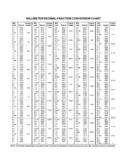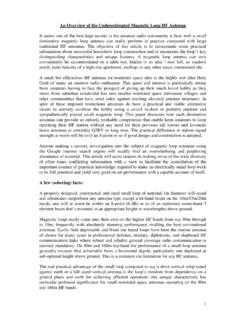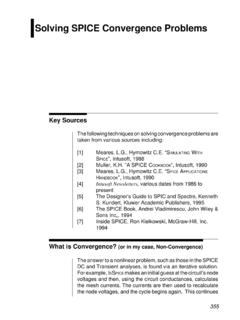Transcription of Power System Economics - Stoft
1 Power System Economics Designing Markets for Electricity Steven Stoft IEEE Press & WILEY-INTERSCIENCE A JOHN WILEY & SONS, INC., PUBLICATION Copyright 2002 by The Institute of Electrical and Electronics Engineers, Inc. ISBN 0-471-15040-1 Contents in BriefList of Results and FallaciesxivPrefacexviiiAcronyms and AbbreviationsxxSymbolsxxiiPart 1. Power Market FundamentalsPrologue2 Why Deregulate?6 What to Deregulate17 Pricing Power , Energy, and Capacity30 Power Supply and Demand40 What Is Competition?49 Marginal Cost in a Power Market60 Market Structure74 Market Architecture82 Designing and Testing Market Rules93 Part 2.
2 Reliability, Price Spikes and InvestmentReliability and Investment Policy108 Price Spikes Recover Fixed Costs120 Reliability and Generation133 Limiting the Price Spikes140 Value-of-Lost-Load Pricing154 Operating-Reserve Pricing165 Market Dynamics and the Profit Function174 Requirements for Installed Capacity180 Inter- System Competition for Reliability188 Unsolved Problems194 Part 3. Market ArchitectureIntroduction202 The Two-Settlement System208 Day-Ahead Market Designs217 Ancillary Services232 The Day-Ahead Market in Theory243 The Real-Time Market in Theory254 The Day-Ahead Market in Practice264 The Real-Time Market in Practice272 The New Unit-Commitment Problem289 The Market for Operating Reserves306 Part 4.
3 Market PowerDefining Market Power316 Exercising Market Power329 Modeling Market Power337 Designing to Reduce Market Power345 Predicting Market Power356 Monitoring Market Power365 Part 5. Locational PricingPower Transmission and Losses374 Physical Transmission Limits382 Congestion Pricing Fundamentals389 Congestion Pricing Methods395 Congestion Pricing Fallacies404 Refunds and Taxes411 Pricing Losses on Lines417 Pricing Losses at Nodes424 Transmission Rights431 Glossary 443 References 455 Index 4601. In Tables 14 through 17 of one such report (DOE 1998a) the useful (amortized) fixed costs are notreported, and the fixed O&M costs are reported in $/kW which may be an amortized value reported withthe wrong units or, if the units are correct, may represent a misguided conversion of an amortized cost toan overnight is not too much to expect that our children will enjoy in their homeselectricity too cheap to L.
4 StraussChairman, Atomic Energy Commission1954 Chapter 1-3 Pricing Power , Energy, and CapacityPOWER IS THE RATE OF FLOW OF ENERGY. Similarly, generating capacity,the ability to produce Power is itself a flow. A megawatt (MW) of capacity is worthlittle if it lasts only a minute just as a MW of Power delivered for only a minuteis worth little. But a MW of Power or capacity that flows for a year is quite price of both Power and energy can be measured in $/MWh, and sincecapacity is a flow like Power and measured in MW, like Power , it is priced likepower, in $/MWh. Many find this confusing, but an examination of screening curvesshows that this is traditional (as well as necessary).
5 Since fixed costs are mainlythe cost of capacity they are measured in $/MWh and can be added to variable coststo find total cost in $ generation cost data are presented, capacity cost is usually stated in $ is the cost of the flow of capacity produced by a generator over its lifetime,so the true (but unstated) units are $/kW-lifetime. This cost provides useful informa-tion but only for the purpose of finding fixed costs that can be expressed in $ other useful economic computation can be performed with the overnight costof capacity given in $/kW because they cannot be compared with other costs until levelized.
6 While the Department of Energy sometimes computes theseeconomically useful (levelized) fixed costs, it never publishes them. Instead itcombines them with variable costs and reports total levelized energy Thisis the result of a widespread lack of understanding of the nature of capacity over units causes too many different units to be used, and this requiresunnecessary and sometimes impossible conversions. This chapter shows how tomake almost all relevant economic calculations by expressing almost all prices andCHAPTER 1-3 Pricing Power , Energy, and Capacity31 Working SummaryReaders wishing to gain only a working knowledgeof measurement units for use in later chaptersshould understand the unitsPrice UnitsEnergyMWh$/MWhPowerMW$/MWhCapacityM W$/MWhCostSymbolCost UnitsFixedFC$/MWhVariableVC$/MWhAverageA CK=FC+cf VC$/MWhAverageACE=FC'cf+VC$/MWhRatioSymb olUnitsCapacity factor cfnoneDurationDnoneNotes: Energy is a static amount while Power andcapacity are rates of flow.
7 The average cost of usingcapacity, ACK, depends on the capacity factor, cf,which is the fraction of time the capacity is used. Theaverage cost of energy, ACE, produced by a specificgenerator also depends on in dollars per megawatt-hour ($/MWh). The remainder of the book confirmsthis by working every example in these Summary 1-3 :Energy is measured in MWh, while Power and capacityare measured in MW. All three are priced in $/MWh, as are fixed and variable units with the same dimensions (money divided by energy) may be used,but this book will use only $/MWh. Screening curves plot average cost as a functionof capacity factor.
8 The slope of the curve is variable cost, and the intercept is fixedcost. The average cost (ACK) plotted in these graphs is not the average cost of usinga megawatt-hour of energy produced at a certain capacity factor but rather theaverage cost of a megawatt-hour of generating capacity. Because the equation fora screening curve is used through the book, understanding this distinction is 1: Measuring Power and the flow of energy and is measured in watts (W),kilowatts (kW), megawatts (MW), or gigawatts (GW).Energy is an accumulation of Power over a period oftime. For instance, a kilowatt flowing for one hourdelivers a kilowatt-hour (kWh) of energy.
9 The priceof both energy and Power is expressed in $/MWh. Itcan also be expressed in mills, short for milli-dol-lars per kilowatt hour, with 1 mill equal to $1 2: Measuring is thepotential to deliver Power and is measured in mega-watts. Like Power , it is a 3: Pricing Capacity. Overnight capacitycosts are measured in $/kW and so cannot be addedto or averaged with variable costs to find which gener-ator could more cheaply serve load of a specific dura-tion. Screening curves plot the annual revenue require-ment (ARR) of a generator as a function of the genera-tion s capacity factor. Fixed cost (FC) is the value ofARR for a capacity factor of zero.
10 Since ARR is mea-sured in $/kWy, the same must be true of fixed FC by converts it to $/MWh, a moreconvenient set of units. Considering the rental cost ofcapacity makes these units seem more natural. To avoid confusion when using screening curves and their associated algebra,the distinction between the average cost of capacity (ACK) and the average costof energy (ACE) should be kept in mind. Traditional screening curves graph 1 Power Market Fundamentals2. Watts per hour has units of watts divided by hours and has no use in the present context. 3. Average revenue per kilowatt hour to ultimate residential consumers was /kWh, according to DOE(2001c, Table 53).






